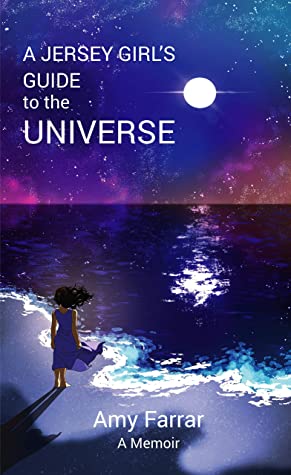 Written by Lauryn Smith A version of this article was originally published in the All Booked Up section of the October 2021 edition of “Networking News,” the official newsletter of the Professional Editors Network. There’s something special about a noncelebrity memoir. With a celebrity memoir, you usually know at least a teensy bit about the person and their life experiences before you even crack open their book. But with a noncelebrity memoir, you tend to go in with fewer assumptions and “spoilers.” With a noncelebrity memoir, you are given a valuable opportunity to learn something new about life. I recently read one such memoir, namely Amy Farrar’s “A Jersey Girl’s Guide to the Universe.” This memoir is a testament to how alike all of us really are, just people doing our best to navigate our time and place in the world. It also shows how, in one way or another, we are not alone.
0 Comments
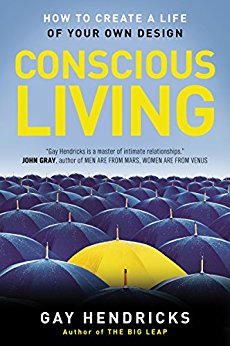 Written by Lauryn Smith Dear Diary, Long time, no write. I could apologize for the absence. I could give you a list of excuses as to why I have been away. Or, I could just jump right back in and review something of the self-help genre. Yeah, I will do that last one. First, a disclaimer. I have always found self-help books to be a little… lame. But I am currently coming down from a workaholic high, a period of doubt, exhaustion, impatience, grumpiness, discouragement and anxiety. Most people have experienced these negative emotions, and I often wrangle with the latter, which I reluctantly attribute to my unyielding perfectionism. So, in a proactive effort, I have determined to give a book on personal development a go. The contender is “Conscious Living: Finding Joy in the Real World” by Gay Hendricks, selected for both its great reviews and the enticing promise of its title proclaims. The book is somewhat remarkable, with a few novel insights on life and truth. The author is considered a pioneer in the field of psychology because he advocates for living life by design and for educating via nontraditional means. He believes that therapy, for instance, should focus less on the past and more on the present and future. In “Conscious Living,” he coaches readers on how to use the powers of love, intention and creation, describing methods that have been successful for patients in his professional practice. He relies on the principles of Taoism and Stoicism to support his goal of helping others conquer fear and live with purpose, explicating five fundamental lessons, such as knowing one’s priorities and fully participating in life. 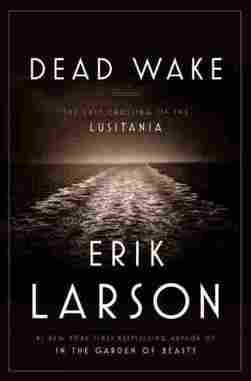 Written by Lauryn Smith I did not think it would be possible, but “Dead Wake” has replaced “The Devil in the White City” as my favorite Erik Larson book. (Can I take a second to brag that my copy of the former is signed by the author?!) If you have not read any of this guy’s books, you need to. Like now. In “Dead Wake,” Larson explores the events during the weeks leading up to the sinking of the luxury ocean liner the Lusitania on May 7, 1915. Many people have heard of this World War I disaster, but few know the minute details, the ill-fated set of conditions that culminated in the deaths of hundreds of passengers. In his characteristic compelling biographical style, Larson educates readers on this maritime catastrophe. First, let’s talk basics. The Lusitania was a Cunard transatlantic liner that navigated between New York City and Liverpool. In response to competition, it was designed in 1907 to be one of the biggest, fastest, most luxurious and most modern ships around. It was the first of Cunard’s “grand trio” of four-funneled ships. This “Greyhound” was cruising from NYC to Liverpool in seas recently declared by Germany to be a war zone when it was attacked by a German U-boat, or submarine. On its final excursion, the Lusitania was captained by William Thomas Turner and contained passengers both regal and humble, as well as numerous children. Remarkably, as Larson demonstrates, the passengers were relatively calm sailing into submarine-infested waters during the tenth month of the war, likely an effect of the widespread expectation that civilian ships were to be kept safe from attack. But as luck would have it (and by luck I mean an array of circumstances that melded juuust so), Unterseeboot-20, the German submarine captained by Walther Schweiger, torpedoed the Lusitania, effectively ending its nautical reign, as well as forcing America’s participation in the war. That summary of the Lusitania is truly just the beginning. It is tempting to detail all the interesting components Larson compiles in his newest nonfiction tale, but not only would that spoil the story, it would take ages. Larson unearths the myriad facets, both large and small, that led to this calamity, and he describes how the interrelation between them resulted in such an outcome. Weather, politics, ship design, cryptanalysis and more—all are important pieces of the story, and Larson presents them eloquently and effortlessly. He paints a vivid picture. Readers will walk away feeling quite familiar with the Lusitania, its history and its peripheral contexts. 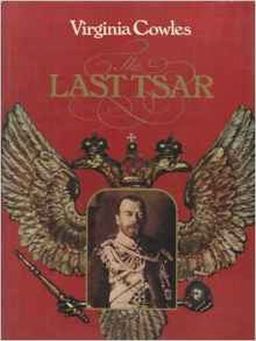 Written by Lauryn Smith I love Russia. Its architecture is beautiful, its culture fascinating, its people vogueish, its history unique. I recently returned from a trip to Moscow, and wow. The country is just incredible. To supplement my research prior to travel, I borrowed my dad’s first edition copy of “The Last Tsar,” also known as “The Last Tsar & Tsarina,” by Virginia Cowles. (His copy happens to be stuffed with a handful of newspaper clippings, all of which relate in one way or another to the notorious Romanovs. Borrowing old books is so much fun). As the book’s title implies, “The Last Tsar” is the nonfiction account of Tsar Nicholas II, the final Russian Emperor. Until 1917, tsars were the supreme rulers of Russia. (The term “tsar” derives from the Latin word for “Caesar,” or emperor.) Nicholas began his reign in 1894, and he was forced to abdicate in 1917. The following year, he and his immediate family were unceremoniously killed en masse by the Bolsheviks. Cowles outlines the events that led to the end of imperial rule and the unfortunate fate of Nicholas, and she does so in a way that is both thorough and comprehensible. Cowles elucidates Nicholas’s character, as well as that of his wife, the German-born Alexandra Feodorovna. The couple, we learn, unfalteringly believed that their rule was a God-given right. Alexandra had great influence on Nicholas and his policies, and the infamous Grigori Rasputin had great influence on Alexandra. Nicholas possessed a warm, timid personality, especially toward Alexandra and their five children. However, he was christened “Bloody Nicholas” by the Russian people, who derided his dependence on Alexandra’s input, his inept leadership and his role in thrusting Russia into a state of war and violence. 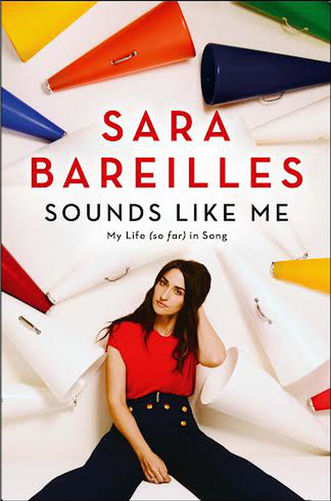 Written by Lauryn Smith Memoirs are not usually my thing—especially celebrity memoirs. The story always seems the same. Modest beginnings, anything-but-modest endings and a mix of hard work, faith and luck in between. Cliché. Naturally I was skeptical about singer-songwriter Sara Bareilles’s “Sounds Like Me,” a book I only learned about when Reviewer Beth Winters had me tag along to a lecture/book signing that was part of Bareilles’s book tour. During the lecture, I learned that Bareilles is delightfully down-to-earth, spunky and relatable. While reading her book, I learned that her writing demonstrates these same traits. It is worth saying that I did not know much about Bareilles or her music prior to reading “Sounds Like Me,” but I think that was good for me. I had no preconceived notions about Bareilles or her story, and by the end of the book, I possessed a degree of familiarity, which prompted voluntary exploration into her music and ideals, exploration catalyzed solely by pure interest. I went in with no expectations, and I came out searching for her albums on Spotify. 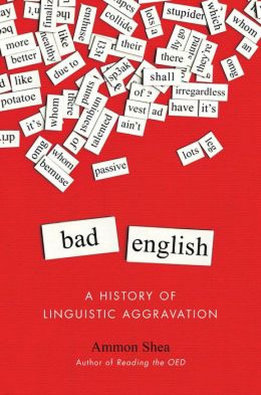 Written by Lauryn Smith Hopefully my review of Ammon Shea’s “Bad English” leaves no stone unturned, literally bemusing you because it ain’t boring irregardless of your interest in linguistics. Did anyone cringe at my depraved use of the English language in that opening sentence? Good. I intended that, and Shea was my inspiration. In his nonfiction book “Bad English,” Shea delineates the language's history, illustrating the worries, objections and complaints of grammarians throughout the ages. In doing so, he intentionally commits linguistic crimes and provides examples of historic and contemporary linguistic "mistakes," ultimately concluding that English is a hot mess but in the best way possible. Shea subtly yet successfully argues against those who take a prescriptive approach to English. He demonstrates that it is not necessary to fight over language. Instead, he shows that language is alive, that it is an interesting subject for study, debate and conversation. According to Shea, there is no right or wrong way to use English as every rule has evidence of being broken. Within the text, Shea presents both sides of the story, citing supporters and detractors of various of English’s canons. To clarify his points, he picks individual words and grammatical tendencies and follows their histories, explaining arguments and counterarguments surrounding their usage. He covers some expected terms, such as “hopefully,” “literally” and “irregardless,” but also less common ones, such as “very,” “donate” and “belittle.” 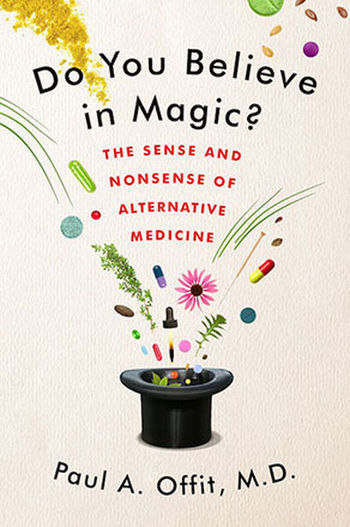 Written by Lauryn Smith Do you believe in magic? Not the magic in a young girl’s heart, but the magic that is alternative medicine. (Sorry, had to.) I never used to oppose the magic of natural remedies, but then I read Paul A. Offit’s accessible and engaging nonfiction book “Do You Believe in Magic?”. Now I am much more leery. Alternative medicine, which includes things like megavitamins, acupuncture and homeopathy, is not all it is cracked up to be, so says Offit in his well-researched, objectively written book on the matter. In fact, Offit presents insurmountable science-based evidence that many forms of alternative medicine do more harm than good. The events Offit chooses to portray in the book illustrate why alternative medicine has become widely accepted as a desirable alternative to mainstream medicine. To many, it is definite, spiritual, meaningful and empowering, and it stems from ancient wisdom... right? Offit explains that there is no evidence that alternative medicine does what it claims to do, that is, heal. I repeat, no evidence. Zip. Nada. Goose egg. (No, personal testimonials do not count as evidence.) In fact, Offit shows that the few studies out there—blame the scarcity on politics—often support the exact opposite. The evidence is not limited to a single arena. Chiropractic manipulations can result in torn arteries. Supplements can cause psychosis, heart arrhythmias, brain swelling and other problems. Megavitamins can increase the risk of cancer. |

Enjoying my book reviews? If you’ve found them helpful or simply love diving into a good book, consider supporting my caffeine-fueled reading sessions! Your contribution helps keep the reviews coming and ensures I stay wide awake for those late-night reading marathons. Cheers to a shared love for literature! ☕️
Categories
All
|
